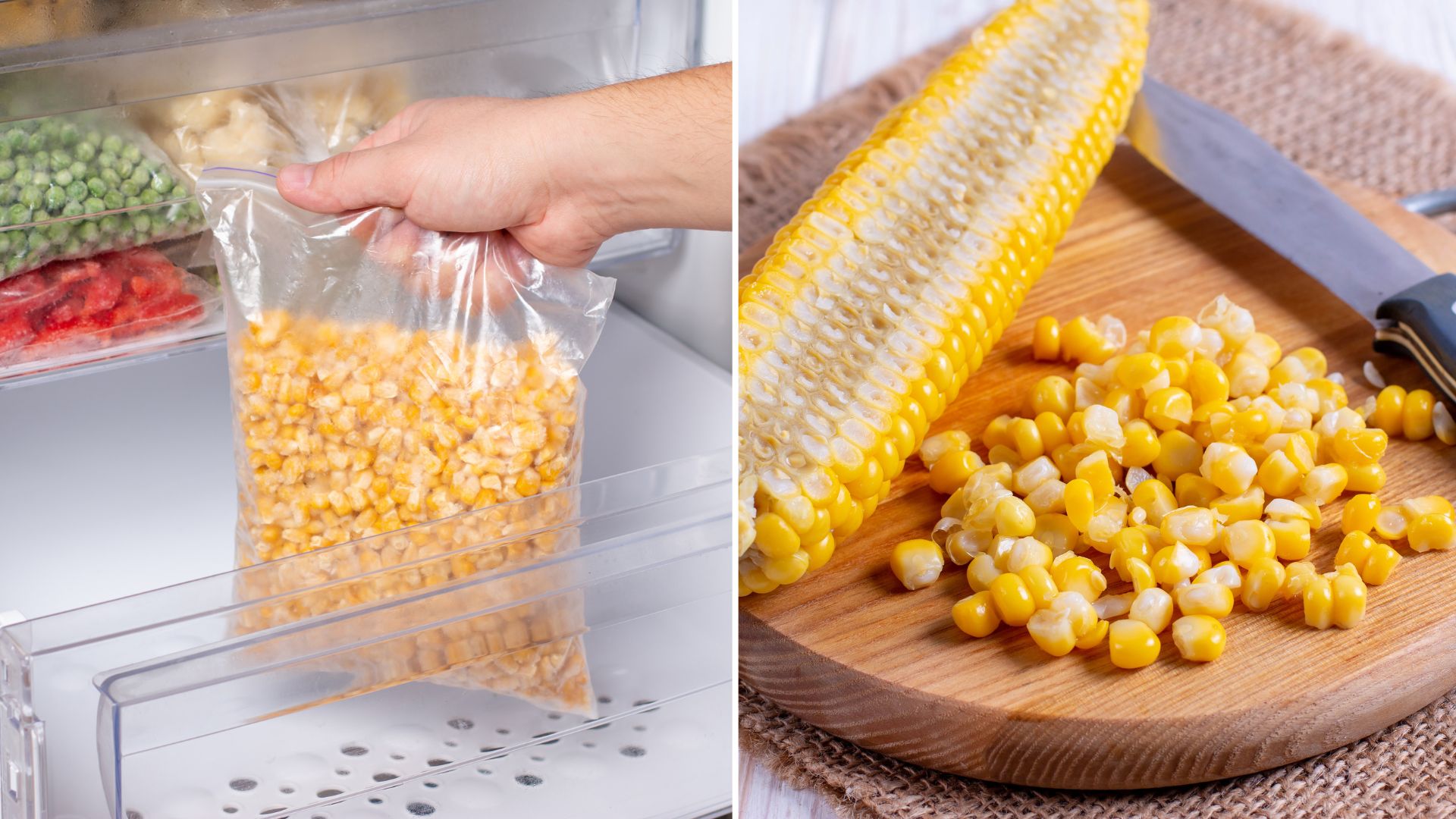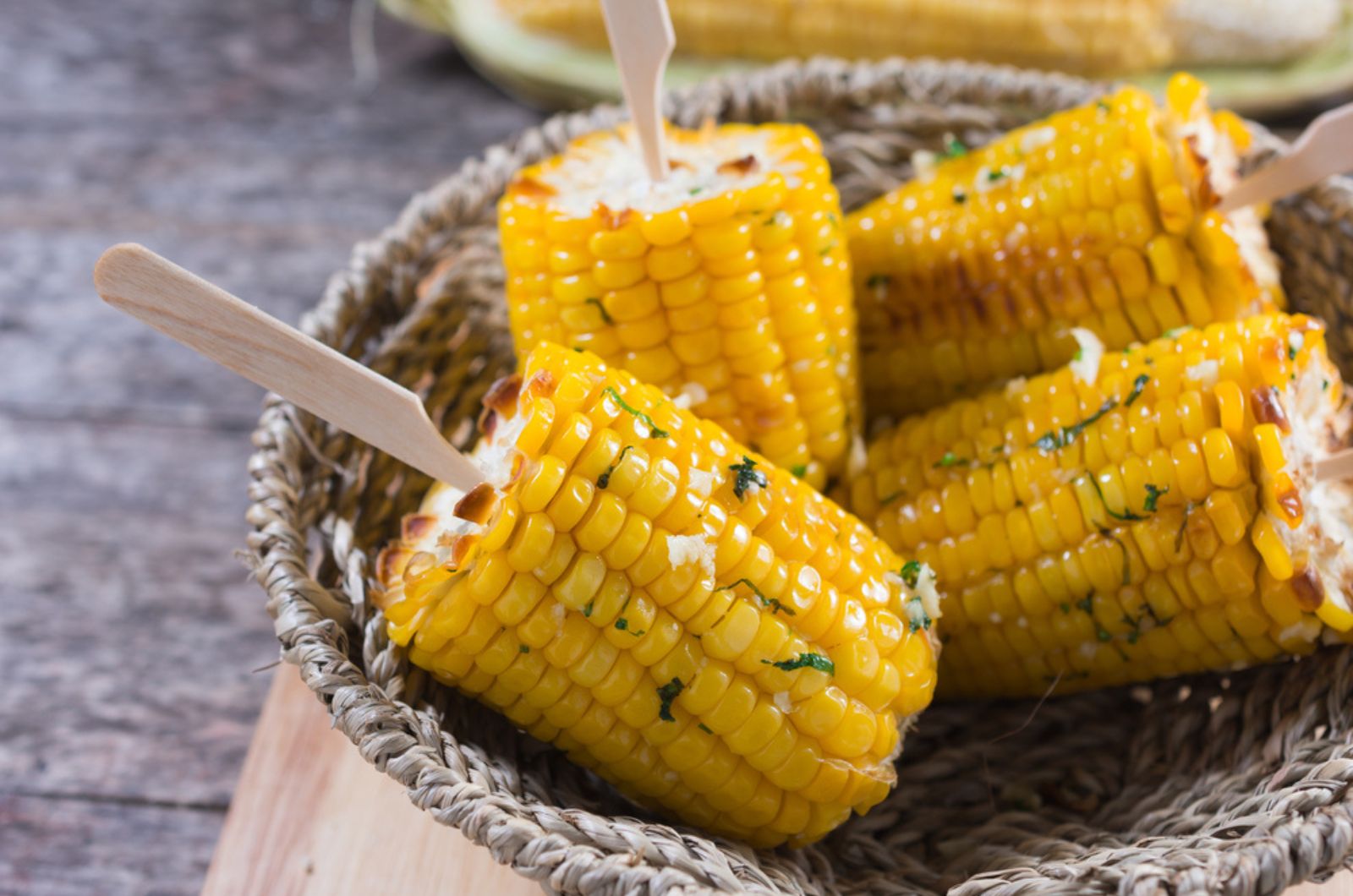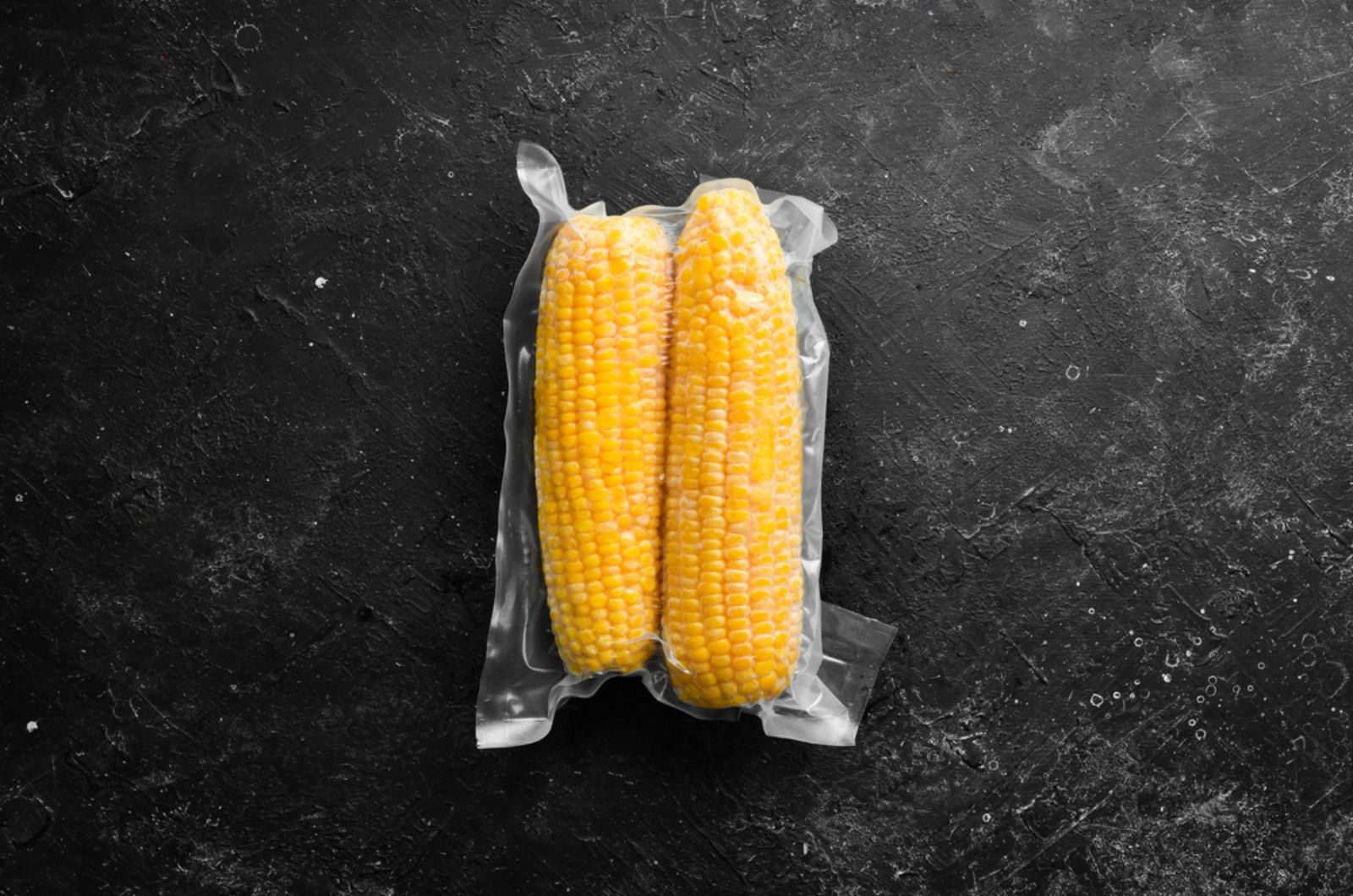Who can resist juicy corn on the cob on a hot summer day? But no matter how much you enjoy these veggies, there will be times when you won’t eat all of them. What should you do if this happens? Freezing is the answer.
When frozen, corn preserves its amazing flavor and texture, so this is definitely the best option.
Now the only question that remains unanswered is: How to freeze corn on the cob? I’ll show you 3 simple ways and it’s up to you to decide!
Let’s get started!
Choosing The Best Corn For Freezing
Before I show you the methods for freezing your corn on the cob, I should tell you how to select the best crops for freezing.
Your corn should be of high quality and picked at the peak of the summer. Pick corn that feels heavy when you hold it.
Also look for crops with clean and bright white threads (those are the hairs on the corn) and a husk (the green outer layer) that doesn’t have any spots or damage.
Gently peel back the husk a bit to see if there are any unwanted surprises like insects or mold hiding at the top of the ear of corn. You want to make sure it’s all clean and fresh before freezing it.
Method 1: Whole Frozen Corn On The Cob
Here are the steps for freezing whole crops.
1. First, remove the green and white husk (the outer layers) and any strands of hair.
2. Next, put the corn into a pot of boiling water with some salt (blanching) and let it cook for about two to three minutes. Use tongs to get the corn out of the boiling water and immediately place it in a bowl of iced water.
This sudden change in temperature will stop the natural enzyme activation in the corn, which can cause color, nutrient, flavor, and texture changes during freezing. And that’s the last thing we want.
3. Take the blanched crop of the ice water bath and let it sit until it’s completely dry and cool. For additional security, wipe each crop with a paper towel to remove any excess water.
4. Wrap the cobs: you can either use plastic wrap or parchment paper to prevent freezer burns.
5. Place the cobs in a freezer-safe bag and don’t forget to remove as much air as possible before sealing the bag. This ensures the corn stays fresh in the freezer.
Method 2: Blanched Kernels
Let’s see the steps for freezing blanched kernels.
1. Start by removing the corn kernels from the cob; simply hold the cob upright inside a bowl and then cut downward into the bowl using a sharp kitchen knife.
I never throw away the cobs but rather freeze them (as shown above) and use them for broths and soups.
2. Blanch kernels in boiling, salted water for about two minutes and scoop them up with a spider strainer or use a colander.
3. Now the standard procedure: leave the kernels to cool, put them in a freezer-safe bag, get rid of as much air as possible, seal well, and place them in the freezer.
Method 2: Unblanched Kernels
You can also skip blanching and freeze fresh kernels. All you need to do is cut the corn off the cob, take the kernels, and put them into a plastic freezer bag or a freezer-safe silicone bag.
Again, get rid of as much air as possible to prevent freezer burns on your kernels.
Don’t forget to label the bag; write the date before placing it in the freezer for future use. You can use corn kernels frozen this way for up to 12 months.
Reheating And Serving Frozen Corn
Here’s how to treat corn from the freezer depending on the freezing method you used.
Whole Frozen Corn
You can use the frozen corn on the cob directly from the freezer by simply boiling it in water for about five minutes until a kernel easily pops with a little pressure from a knife.
Serve it with butter, salt, and pepper, or use the kernels in various dishes like stuffed avocados, or garnish them with fresh herbs like cilantro or basil.
Blanched Kernels
The easiest way to reheat the blanched kernels is by using a microwave. Just put the kernels in a microwave-safe dish and add a few tablespoons of water. Microwave them on high for approximately two minutes (or until they’re heated through).
The corn you buy in the grocery store is typically frozen this way.
These kernels taste heavenly in many dishes, from salads to wraps and salsas; you can even make sweet potato cornbread.
Unblanched Kernels
If you have frozen unblanched kernels and want to use them, just add them to a pot of boiling water with some salt and cook them for about three to five minutes or until they are warmed through.
Unfortunately, kernels frozen this way won’t retain their crisp texture so they’re best suited for recipes where the texture doesn’t matter as much, such as soups and stews.
The Bottom Line
It’s really fun watching the development of the corn and the best part is, of course, eating it. If you had (hopefully) a high corn yield, consider freezing the ones you don’t eat.
The freezing process for corn on the cob isn’t complicated so you should definitely try it. You’ll remember my words in the midst of the winter when you reheat your corn and it has the same taste as in the peak of the summer!



